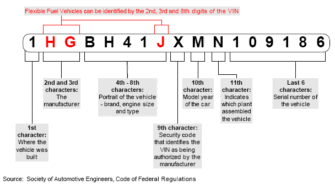

Road Safety tips: How to Avoid Common Driving Distractions and Protect Yourself and Others
In today’s automotive landscape, state-of-the-art safety systems have become an integral part of vehicles, designed to shield drivers from unexpected hazards on the road. While these technologies have made significant strides in enhancing road safety, there remains a persistent challenge that continues to jeopardize lives – distracted driving. Despite all the advancements in vehicle safety, automakers have yet to find a way to entirely prevent this perilous behavior, which remains a prevalent issue on roadways nationwide.
Distraction behind the wheel, even if momentary, can lead to catastrophic consequences. Younger drivers, in particular, are the most prominent culprits, with a startling statistic revealing that six out of every ten car crashes involve some form of distracted driving.
In this comprehensive guide, we’ll delve into the various common distractions that can divert your attention from the road. By understanding and actively avoiding these perilous behaviors, you can not only safeguard your own life but also contribute to a safer environment for all road users.
1. Avoid Texting or Talking on Your Phone While Driving
Car safety agencies have singled out texting as perhaps the most alarming distraction on the road. The sobering reality is that “sending or reading a text takes your eyes off the road for 5 seconds. At 55 mph, that’s like driving the length of an entire football field with your eyes closed.”
Driving is an activity that demands your undivided attention. According to experts, any activity that diverts your focus, even momentarily, can transform into a dangerous distraction, exponentially increasing your risk of a potentially life-changing collision.
2. Avoid Eating and Drinking While Driving
A disconcerting statistic reveals that over 21% of young drivers indulge in eating while driving. Experts emphasize that this seemingly innocuous act engenders visual, manual, and cognitive distractions, as drivers wrestle with unwrapping food packaging, holding meals with one hand, reaching for napkins, applying condiments, and attempting to manage beverages—all while their eyes should be on the road.
These seemingly mundane tasks can make paying attention while driving virtually impossible. Next time you find yourself tempted to dine on the go, consider waiting until you’ve reached a safe stopping point, such as a parking lot or your destination, to savor your meal.
3. Avoid Talking to People in Your Car
While having passengers in your vehicle is a common occurrence, it’s essential to be mindful of the potential distractions they can pose. Experts caution that engaging in conversations with other passengers, especially those who may be lively or in need of your attention, can create a perilous distraction while driving. In fact, some states have imposed restrictions on the number of passengers young drivers can transport to mitigate this risk.
4. Avoid Fiddling with the Infotainment or Navigation System While Driving
The advent of cutting-edge technology has transformed infotainment systems into valuable tools that can assist drivers in various ways. However, these very systems can also lead to risky behavior that heightens the likelihood of accidents. Ideally, you should configure your navigation system and entertainment options before setting off on your journey.
A disconcerting study found that “drivers take an average of 40 seconds to fiddle around with their navigation, which, if done while moving, is 40 seconds where you are distracted.” This issue has become so pervasive that automakers have resorted to installing lock features, which prohibit the use of infotainment systems while the vehicle is in motion.
Conclusion: Drive Safely and Responsibly
While driving inherently carries risks, it is essential to minimize these risks by avoiding activities that distract us from the primary task at hand – safe and responsible driving. Engaging in risky behaviors while behind the wheel not only endangers your life but also places the lives of others at risk.
In conclusion, it is crucial to remain vigilant and prioritize safety while on the road. By abstaining from distractions like texting, eating, engaging in lengthy conversations, or fiddling with infotainment systems, you can play a significant role in reducing accidents and ensuring a safer driving environment for all. Remember, the ultimate responsibility lies with each one of us to make our roads safer, one distraction-free journey at a time.
Add a comment Cancel reply
Categories
- Biography (4)
- Car Reviews (30)
- Car Tips (42)
- Classic Cars (45)
- Net Worth (12)
- Transportation (19)
Recent Posts
Related posts


How Roadside Potholes in Nigeria Are Damaging Your Car: Causes and Consequences

Toyota Camry 2.5-Litre Engine: Common Problems and What Nigerian Buyers Should Know








